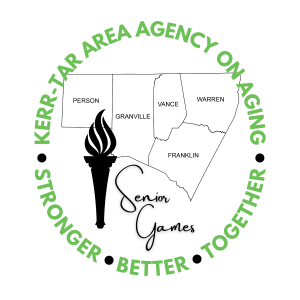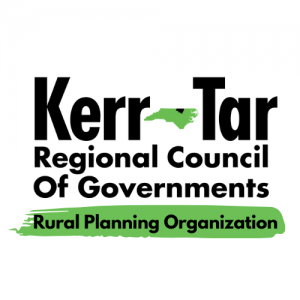How Can I Request a Free Test?
Free tests can be ordered at covidtests.gov or at usps.com/covidtest. The first tests will ship by the end of January. The White House says “tests will typically ship within 7-12 days of ordering” through the U.S. Postal Service. USPS reports shipping times of 1-3 days for its first-class package service in the continental United States. Shipments to Alaska, Hawaii, Army Post Office (APO), Fleet Post Office (FPO) and Diplomatic Post Office (DPO) addresses will be sent through Priority Mail.
When to Consider Self-Testing
Self-tests may be used if you have COVID-19 symptoms or have been exposed or potentially exposed to an individual with COVID-19.
Even if you don’t have symptoms and have not been exposed to an individual with COVID-19, using a self-test before gathering indoors with others can give you information about the risk of spreading the virus that causes COVID-19. This is especially important before gathering with unvaccinated children, older individuals, those who are immunocompromised, or individuals at risk of severe disease.
A positive test result indicates that you likely have a current infection, and you should isolate and inform close contacts.
A negative test result indicates that you may not be infected and may be at low risk of spreading disease to others, though it does not rule out an infection. Repeating the test will increase the confidence that you are not infected. Performing serial tests, meaning two or more tests over several days with at least 24 hours between tests—with one test as close as possible to the event you will attend—improves the reliability of testing and reduces your risk of transmitting disease to others even further. Some self-tests require this type of repeat testing in the manufacturer’s instructions.
How to Use a Self-Test
Read the complete manufacturer’s instructions for use before using the test. Talk to a healthcare provider if you have questions about the test or your results. Refer to CDC’s videos on How to Use a Self-Test and How to Interpret Self-Test Results.
Prepare to Collect a Specimen
- Wash your hands with soap and water for at least 20 seconds.
- Open the box and follow the instructions included with the self-test to collect your own nasal or saliva specimen.
- If you don’t collect the specimens as directed, your test results may be incorrect.
Perform the Test
Follow the instructions exactly and perform the steps in the order that they are listed. The manufacturer may also provide other resources, such as quick reference guides or instructional videos, to help you perform the test correctly.
Most self-tests require the collection of a nasal specimen (see the Additional Print Resources section below). A few self-tests require a saliva specimen.
Once collected, use the specimen as described in the instructions to complete the self-test.
Watch Video: How to use a self test [00:02:45]
Tips:
- Store all test components according to the manufacturer’s instructions until ready for use.
- Check the expiration date. Do not use expired tests or test components that are damaged or appear discolored based on the manufacturer’s instructions.
- Clean the counter top, table, or other surfaces where you will do the test.
- Do not open test devices or other test components until you are ready to start the testing process.
- Have a timer ready because you may need to time several of the test steps.
- Read test results only within the amount of time specified in the manufacturer’s instructions. A result read before or after the specified timeframe may be incorrect.
- Don’t reuse test devices or other components.
After you have the results, discard the specimen collection swab or tube and test in the trash, clean all surfaces that the specimen may have touched, and wash your hands.
If Your Test Result is Positive
You should stay home or isolate for 10 days and wear a mask if others could have contact with you. Also, tell a healthcare provider about your positive test result and stay in contact with them. If your illness becomes severe, seek medical attention. If you have an emergency warning sign (including trouble breathing), seek emergency medical care immediately. To avoid spreading the virus to others, follow CDC recommendations.
Tell your close contacts that they may have been exposed to the virus that causes COVID-19. A person with COVID-19 can begin spreading it starting 48 hours (or 2 days) before the person has any symptoms or tests positive. By informing your close contacts they may have been exposed, you are helping to protect everyone.
If you think your positive test result may be incorrect, contact a healthcare provider to determine whether or not additional testing is necessary.
Watch Video: How to interpret self test results [00:01:32]
If Your Test Result is Negative
A negative test result means the virus that causes COVID-19 was not found in your specimen, and you may have a lower risk of transmitting the disease to others. If you took the test while you had symptoms and followed all instructions carefully, a negative result means your current illness is probably not COVID-19, though it does not rule out a COVID-19 infection.
However, it is possible for a test to give a negative result in some people who have COVID-19. This is called a false negative. You could also test negative if the specimen was collected too early in your infection. In this case, you could test positive later during your illness.
Serial Testing (Repeat Testing)
Some self-tests are designed to be used in a series. Serial self-testing is when a person tests themselves multiple times for COVID-19, or on a routine basis, such as every few days. By testing more frequently, you might detect the virus that causes COVID-19 more quickly and could reduce the spread of infection. Some self-tests include instructions for performing serial testing, including the number of days between tests, and may include more than one test in the package.
If your self-test is negative, you should follow the manufacturer’s instructions for use for serial testing, if applicable, that are included in the test box, or you can find the instructions for your test (molecularexternal icon or antigenexternal icon) on the FDA website. They may recommend you test again within 2 or 3 days. Contact a healthcare provider if you have any questions about your test results or serial testing. You may also use the COVID-19 Viral Testing Tool to help you determine the next steps after testing. If you have COVID-19 symptoms, especially if you have been exposed to someone who has COVID-19, you should quarantine according to CDC recommendations.
If you think your negative test result may be incorrect, contact a healthcare provider to determine whether or not additional testing is necessary.
If Your Result Shows Invalid or Error
Sometimes invalid results or an error can show on the test device. Invalid results or an error can occur for many reasons. Your specimen may not have been collected correctly, or the test may have malfunctioned.
Invalid test results are rare but can occur. If the self-test shows an invalid result or a test error, the test did not work properly. If this happens, refer to the instructions for use in the package insert and contact the manufacturer for assistance.
Click HERE for a flyer on how to complete a home test.



